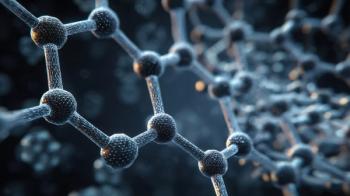
Biotherapeutics and Their Impurities and Degradants: Structural Characterization and QC
This session includes presentations on biotherapeutics and their impurities, including protein pharmaceuticals, glycans, glycopeptides, antibody-drug conjugates and more.
This session includes presentations on biotherapeutics and their impurities, including protein pharmaceuticals, glycans, glycopeptides, antibody-drug conjugates and more.
The first presentation in the session will be given by Joshua S. Sharp of the University of Georgia (Athens, Georgia) and is titled “Rapid Conformational Analysis of Protein Pharmaceuticals by an Abbreviated Hydroxyl Radical Footprinting Method.” Sharp will describe an abbreviated hydroxyl radical footprinting (HRF) technique for the conformational comparison of therapeutic protein samples using hydroxyl radical protein chemistry and LC-MS analysis.
The next talk, to be delivered by Maria Lorna A. De Leoz of NIST (Gaithersburg, Maryland) and the University of Maryland (College Park, Maryland), is titled “Comprehensive Mass Spectral Reference Library of Glycans and Glycopeptides for Therapeutic Antibodies” and will discuss a high-quality and comprehensive mass spectral reference library that was developed for characterizing glycan heterogeneity and sites of glycosylation in therapeutic antibodies.
Rebecca Rose of Utrecht University (Utrecht, Netherlands) will present the next talk, “The Relationship Between Mutation, Structure and Glycosylation of IgG Antibodies Revealed Using Native MS and HDX-MS.” Rose’s presentation will discuss the analysis of binding affinity of antibody heavy chains by native MS, and of allosteric structural changes influencing glycosylation by HDX-MS.
The fourth presentation in the session, “Glycosylation Analysis of Therapeutic Antibodies in Serum Samples Using Microfluidic CD Platform and MALDI-MS,” will be delivered by Thuy Tran of Stockholm University (Stockholm, Sweden). The presentation will discuss a method for glycosylation analysis of antibodies in cell culture media using a microfluidic CD platform and MALDI-MS that was recently modified with immunoaffinity purification of antibodies using the target antigen and used to analyze glycans of commercial therapeutic antibodies incubated in serum.
The penultimate presentation will be given by Justin Sperry of Analytical R&D at Pfizer, Inc. (Chesterfield, Missouri) and is titled “Subunit LC–MS Methods for the Characterization of Biotherapeutics: Case Studies for Antibody-Drug Conjugates and CRM197 Using Ultrahigh-Resolution QTOF Mass Spectrometry.” The talk will discuss the development of novel subunit LC-MS methods for heightened characterization of ADCs and CRM197, respectively.
Finally, Shiaw-Lin Wu of Northeastern University (Boston, Massachusetts) will present “Determining Cystine Knot and Disulfide Linkages in Recombinant Human Arylsulfatase A Using Multi-enzyme and LC-MS/MS with Electron Transfer Dissociation Approaches.” This presentation will identify very difficult disulfide linkages in a cystine knot for use in therapeutic protein development.
Newsletter
Join the global community of analytical scientists who trust LCGC for insights on the latest techniques, trends, and expert solutions in chromatography.




